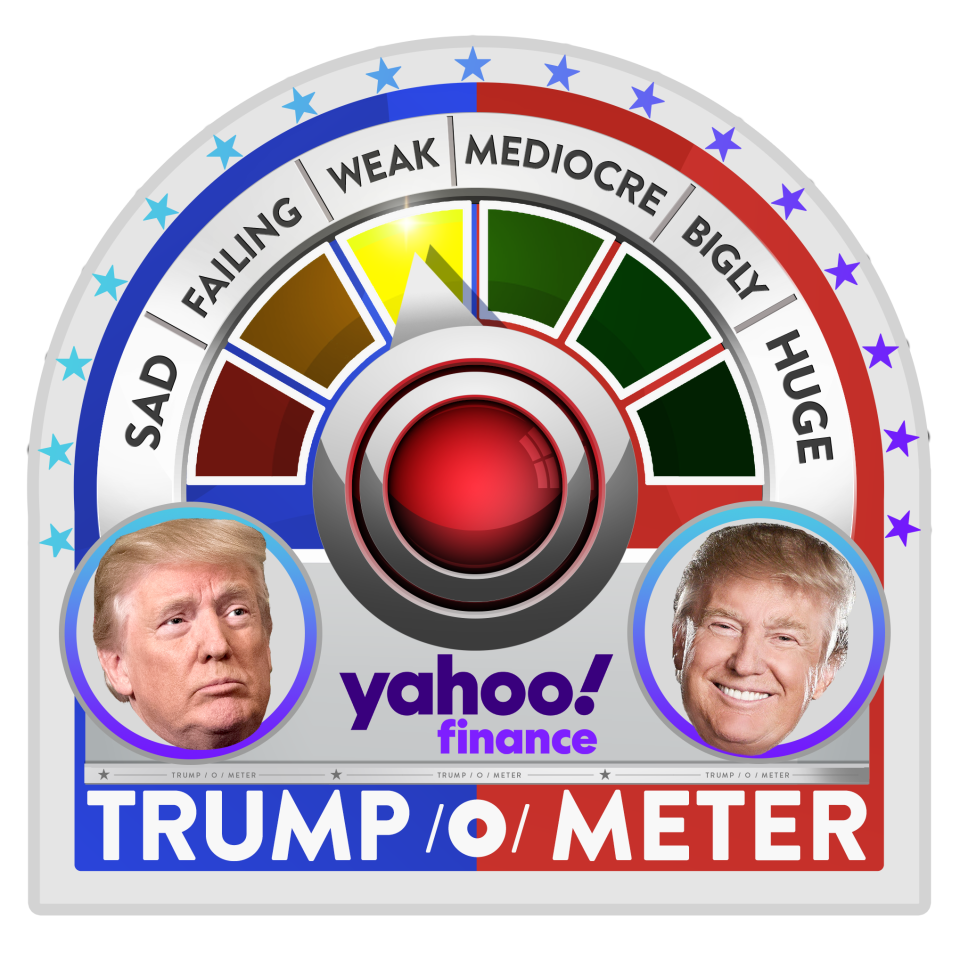This week in Trumponomics: Trump has an Obama problem
President Trump has had three years to boost the economy above the tepid pace of the Obama years. And he hasn’t.
The latest data from the Commerce Department shows the U.S. economy grew 2.3% in 2019. That’s not bad. But it’s in the same range as the Obama economy, which averaged 2.2% annual growth in Obama’s second term. Trump, of course, decried the Obama economy as a “disaster.” Yet the Trump economy now looks much the same.
Trump blasted Obama as being “the first president in modern history not to have a single year of 3% growth.” Trump now seems likely to be the second. GDP growth hit 2.9% in 2018, as it also did in 2015. So Obama and Trump both came close. Trump promised to boost economic growth to 3% or even 4%, but he’s not going to get there. Most economists expect slower, not faster, GDP growth in 2020, and 3% seems out of reach under any scenario.
Back in 2016, Trump also dinged Obama for a “doubling of the national debt” during his presidency. Whoops! Annual budget deficits have more than doubled under Trump, with the Congressional Budget Office now forecasting deficits above $1 trillion for each of the next 10 years. If Trump serves 8 years, his contribution to the national debt will end up being considerably more than Obama’s.
Trump wants voters to think he singlehandedly revived growth and produced the greatest economy ever. It’s not remotely true. That’s why this week’s Trump-o-meter reads WEAK, the third-lowest reading.

Voters tend to give the president way too much credit (or blame) for the state of the economy. Here’s the reality: The U.S. economy has entered a low-growth era that no presidential policy has yet improved. Obama had the advantage of near-zero interest rates engineered by the Federal Reserve, and that didn’t do it. Trump signed off on a large set of deficit-financed tax cuts, and that hasn’t done it either.
Many economists think permanent, irreversible changes such as digitization and globalization have rendered traditional policy moves less effective than in the past. Policymakers could still stimulate the economy by finding new ways to boost workers’ skill levels or harness innovation, but nobody has done much on that. Trump’s tax cut was traditional supply-side stimulus that supporters said would boost growth by giving corporations and the wealthy more money to spend. It hasn’t happened.
Trump’s trade policy, meanwhile, is probably hurting growth. The “phase one” trade deal with China means no additional tariffs, but about 90% of the tariff burden Trump has imposed on Chinese imports will remain in place. That raises costs on American producers and detracts slightly from growth.
The good news for Trump is that he inherited an improving labor market that has continued to tighten at about the same pace since 2012. Trump can brag about super-low 3.5% unemployment, the best in 50 years. But wages have risen only modestly and many families are barely keeping up with inflation. That’s consistent with ho-hum 2% growth.
Trump is quick to boast when stocks hit record highs or unemployment drops by another tenth of a point. But he had no boast about the final 2019 GDP figure. If mediocre growth was a disaster under Obama, what is it under Trump? Something not to call attention to, apparently.
Rick Newman is the author of four books, including “Rebounders: How Winners Pivot from Setback to Success.” Follow him on Twitter: @rickjnewman. Confidential tip line: [email protected]. Encrypted communication available. Click here to get Rick’s stories by email.
Read more:
Read the latest financial and business news from Yahoo Finance
Follow Yahoo Finance on Twitter, Facebook, Instagram, Flipboard, SmartNews, LinkedIn, YouTube, and reddit.
